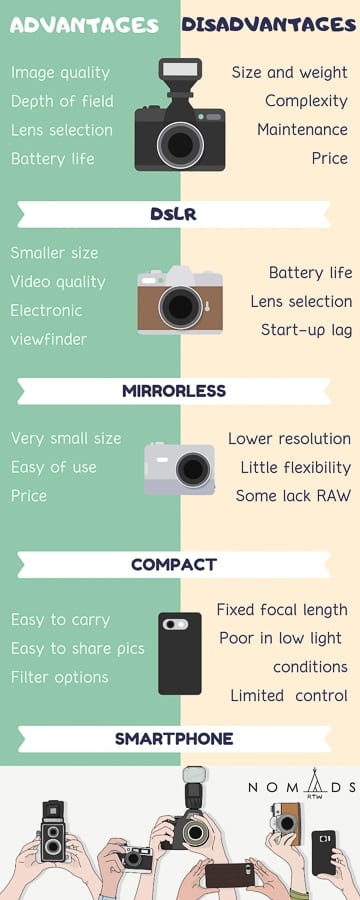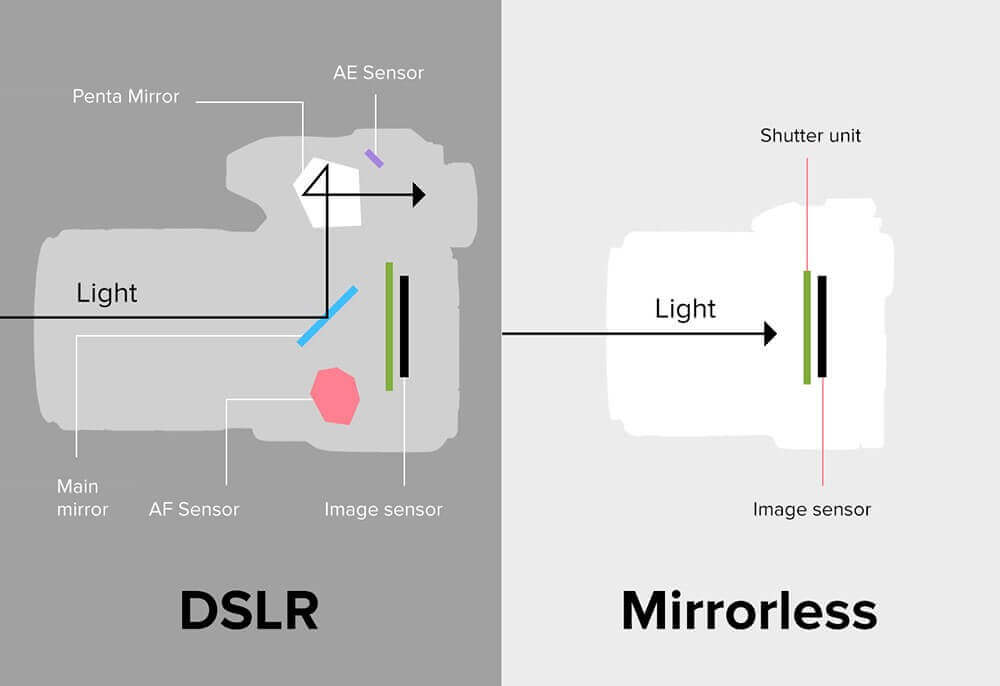The Revolution in Photography: Advantages of a Mirrorless Camera
Introduction
With the march of technology, the field of photography has evolved considerably over the past decade. The latest addition to this evolution is the mirrorless camera. These new-age pieces of photography equipment have created a revolution in the world of photography, bringing unique advantages to the table that many professional photographers are now opting for. In this comprehensive guide, we'll delve into what makes these cameras special, their working mechanics, benefits, and why professionals are making the shift.
What's a Mirrorless Camera Anyway?
Let's delve deep into the intriguing world of mirrorless cameras. In simple terms, it is a genre of digital camera distinctly known for the absence of an optical mirror setup. This structure sets it apart from the traditional DSLR cameras that use mirrors to direct light from the camera lens to an optical viewfinder.
Here's what exactly differentiates a mirrorless camera:
- No optical mirror: Unlike conventional DSLR cameras, mirrorless cameras lack an optical mirror setup.
- Direct light to sensor: The mechanism of these cameras directs the light from the lens straight to the image sensor.
- Electronic viewfinder or LCD screen: The image sensor then showcases the live image on the camera's electronic viewfinder or the rear LCD screen.
- Real-time imaging: Since there's no mirror to constantly flip during clicking, what you see in the viewfinder or the screen is a real-time image.
By understanding these points, appreciating the advantages of these cutting-edge devices becomes much easier.
How Do Mirrorless Cameras Work?
The operational mechanism of a mirrorless camera diverges quite significantly from that of its DSLR cousins - this primarily lies in how it handles light intake. Here's a simplified breakdown of its operation:
- When you're using a mirrorless camera, the light enters the lens and travels directly to the image sensor. This is an essential part of what distinguishes a mirrorless camera from a DSLR.
- The image sensor then comes into play, translating the light into an electronic image. The image sensor is activated at all times which enhances the real-time capability of these cameras.
- This electronic image is concurrently projected onto the camera’s electronic viewfinder (EVF) or rear LCD screen, providing the photographer with an accurate representation of the final product.

- All these operations take place in real-time which means as you adjust your settings or framing, you get a live preview of how your final shot will potentially look.
In essence, it's the omission of the traditional optical mirror architecture that makes a mirrorless camera a truly digital tool, setting the pace for the future of photography technology.
Why Choose a Mirrorless Camera? Exploring the Unique Benefits
Unveiling the Distinct Advantages
Mirrorless cameras bring a slew of unique benefits that distinctly sets them apart in the photography marketplace. They redefine the professional shoot experience with their sheer size reduction, enhanced speed and superior video performance. Let’s scrutinize these elements further.
The Compact Advantage: Size and Weight
So, what delineates mirrorless cameras when it comes to size and weight?
- Considerably Smaller and Lighter: With the elimination of the mirror mechanism, these cameras are noticeably more compact and lightweight. This is a boon for photographers who need to be on the move constantly or prefer a less bulky photography kit.
Efficiency at Its Best: Speed
What about the speed of mirrorless cameras? Does it promise efficiency?
- Accelerated and Precise: Mirrorless cameras are renowned for their brisk autofocus systems. The principal imaging sensor continually transmits data to the autofocus points, promising swift, accurate shots.
- Silent Shooting: Without a mechanical shutter, mirrorless cameras facilitate silent shooting, a major advantage in environments where noise is unwelcome.
Phenomenal Video Capabilities
And how do mirrorless cameras enhance the video shooting experience?
- High-Quality Videos: A distinct contrast to DSLRs, mirrorless cameras are a clear winner when it comes to videos, delivering top-quality 4K videos without a hitch.
- Real-Time Preview: They offer an excellent real-time preview with exact depth-of-field, which means what you see is what you get.
- Enhanced Autofocus: With improved autofocus even during filming, mirrorless cameras solve one of the biggest gripes of video-capturing with DSLRs.
In essence, these clear-cut advantages make the mirrorless camera highly desirable for both budding photographers and seasoned professionals alike.

How Are Professionals Transitioning to Mirrorless Cameras?
As technology advances, the professional world of photography adapts. The emergence of mirrorless cameras has instigated a noteworthy migration, where professionals from various fields are embracing this transformative technology.
Harnessing the Potential of Mirrorless Cameras in Professional Work
Adapting to mirrorless cameras tends to significantly impact the work of professional photographers. Here's how:
- Enhanced Image Quality: Many users agree that mirrorless cameras produce higher quality images compared to their DSLR counterparts.
- Superior Video Performance: The advanced video capabilities of mirrorless cameras have been a game-changer in videography, making a major impact in domains like wedding cinematography and documentary filmmaking.
- Increased Efficiency and Portability: Thanks to their compact design, mirrorless cameras are easier to carry and handle, making fieldwork more efficient for professional photographers.
Compatibility of Mirrorless Cameras with Diverse Lenses
Another persuasion for professionals to transition to mirrorless cameras is their versatility to work with various lenses. Some key points to note include:
- Exclusive Mirrorless Lenses: Mirrorless cameras come with their own exclusive range of lenses, which are generally smaller, lighter, and have better optics.
- Adaptability: Using lens adaptors, mirrorless cameras can be made compatible with existing DSLR lenses. This broadens the horizons for professionals, allowing them to use their current lenses, which translates into remarkable cost savings and flexibility.
In conclusion, the shift towards mirrorless cameras is not a mere trend, but a reflection of their superior features and adaptability. These cameras are becoming an indispensable tool for today's professional photographers.
Conclusion
To conclude, mirrorless cameras, with their compact design, improved speed, and superior video capabilities, are driving the new photographic revolution. Professionals switching to these cameras for their work is proof of the significant advantages and potential they offer. Meanwhile, they also have excellent adaptability to various lenses, making them a worthwhile investment for any photography enthusiast or professional.
Related FAQs about what are the advantages of a mirrorless camera
What are the main differences between a mirrorless camera and a DSLR?
The key differences lie in size, weight, and mechanism. Mirrorless cameras lack the traditional mirror and optical viewfinder setup found in DSLRs, hence are more compact. The light entering a mirrorless camera goes directly to the image sensor, providing a real-time digital image, whereas in a DSLR, light is reflected by the mirror to the optical viewfinder.
Are mirrorless cameras better for videos?
Yes, mirrorless cameras are generally considered superior for video capture. Their advanced autofocus system exerts a positive effect on video shooting. They also offer a real-time preview with precise depth-of-field and can usually shoot high-quality 4K videos, elements which make them stand out in video performance.
Why do some photographers prefer mirrorless cameras over traditional ones?
Mirrorless cameras appeal to photographers due to their compact size, reduced weight, and real-time imaging functionality. The precise autofocus, speed, silent shooting, and superior video capabilities are also factors. The adaptability with various lenses makes them a versatile tool for different photography styles.


